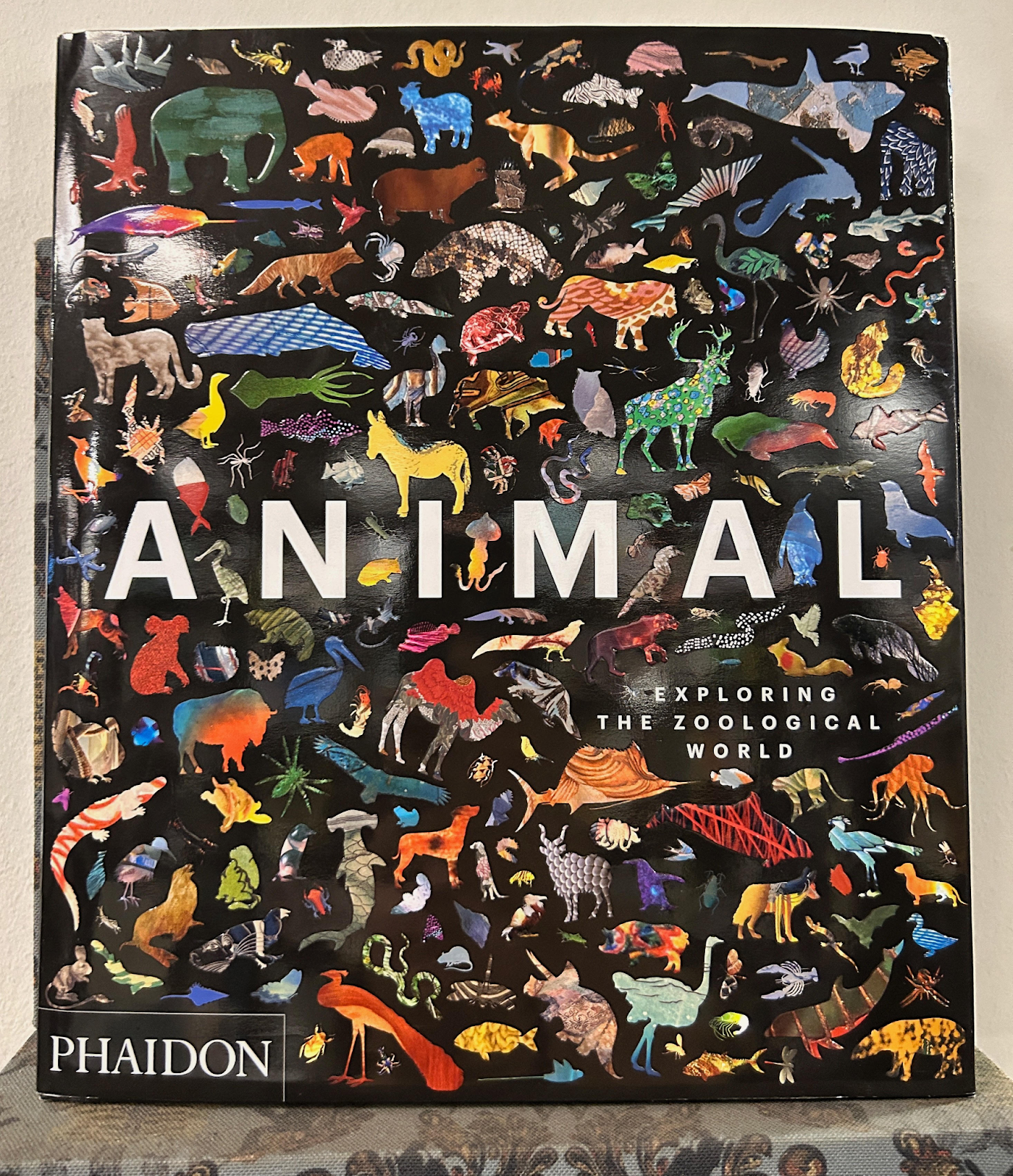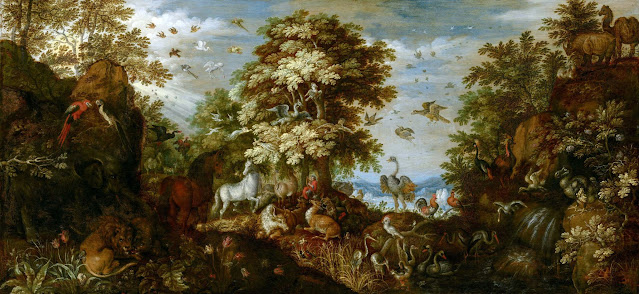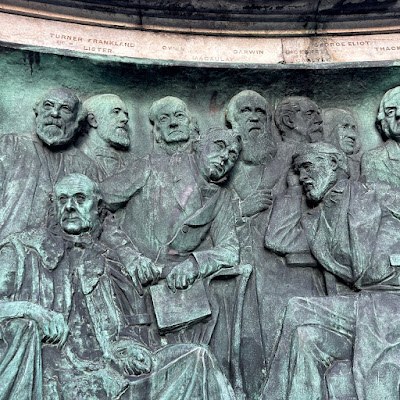Most books about the history of natural science are forced to at least mention Richard Owen, owing to his extensive career which swept through the whole animal kingdom and even to more domestic causes, such as sanitary reform. Almost no aspect of natural history was left untouched by his hand. Any book on dinosaurs, for instance, usually dedicates a small portion of its pages to acknowledging the scientist who gave the group of reptiles their iconic name. However, these brief remarks can only impart so much, usually only serving as an introduction to Owen’s life, which, unless you feel inclined to spend hundreds of pounds on books or subscriptions to academic journals, can be challenging to find accurate information about. Unsurprisingly, owing to the nature of the internet, many web articles are steeped in sensationalist headlines about various controversies he was involved in, often painting him as a cartoonishly power-hungry villain. Some good examples of this are: “
The Man Who Named Dinosaurs Was An Absolute Train Wreck” & “
The Dastardly Doings of the Paleographical Professor”. While both contain some factual information and have snappy titles, they are written with a bias against Owen and exaggerate his ‘crimes’ for a more entertaining and clickable read. This admittedly works. I clicked them, but I benefit from three years of research to inform my opinions.
That being said, there are a few positive posts here and there, such as: “
Dinosaurs, Gorillas & More: Remembering Richard Owen” and “
Sir Richard Owen and the Sanitary Reform in Lancaster”, which I recommend.
In response to the lack of accessible, sympathetic information on the web and in popular books, I hope to expand on these brief snippets to highlight the nuances of Owen’s life and career and have some fun with the project.

Cover of “Animals, Exploring the Zoological World”
“Animals, Exploring the Zoological World”, pg. 234
“It remains uncertain whether this painting by the Dutch artist Roelandt Savery (1576-1639), one of the most famous of a dodo, was of a live or a dead subject. The latter is perhaps more likely. In fact, Savery's depiction of the large head, curved neck, short stumpy legs and big rump has been questioned through modern anatomical work. In 2015 the British palaeontologist Julian Hume examined numerous dodo bones from the world's museums and suggested that the bird has longer legs, a straighter neck, a less bulky body and a smaller head than its common image. After coming under the ownership of an eighteenth-century ornithologist, George Edwards, Savery's painting reached the Natural History Museum, where the first superintendent, Professor Richard Owen, used it to scientifically describe the dodo in 1866.“
As of 1866, this painting would have been in the British Museum, where it was donated by George Edwards in 1750, as the inscription at the top of the artwork shows. It was likely moved to the Natural History Museum between 1881 and 1883 when the organic collections and associated natural history material were being moved from one museum to the other where it remains. As the author states, this is arguably the most iconic painting of a Dodo and is the foundation of the modern public's idea of the bird's appearance. Therefore, it holds great importance. This was just as true in Owen’s time, and as the British empire expanded, the Dodo became a popular point of study for many scientists. Flightless birds, in particular, are a group that we find Owen returning to time and time again, from the giant moas and kiwis of New Zealand, a pet subject of his, to this icon of extinction, the Dodo of Mauritius.
It was first anatomically described in ‘Memoir On The Dodo (Didus ineptus, Linn.). By Richard Owen, F.R.S., With An Historical Introduction By The Late John Broderip, F.R.S.’ in 1866. As is to be expected with works by Richard Owen, there is some controversy surrounding this text as to whether he or George Clark, who discovered the collection of bones the memoir is based on in the Mare aux Songes, an area of marshy land near the south coast of Mauritius (Fuller, 2003) had the first rights to the description of the bird, a more thorough analysis of this situation can be found in “
How Owen stole the Dodo”. Regardless of who had the upper hand in publishing, Owen was excited to have the opportunity to examine the new cache of bones, as evidenced by a letter he wrote to his sister in October 1865:
“The dodo I owe mainly to the Bishop of Mauritius: it was found — its bones to wit — in a morass by one of the diocesan schoolmasters, for whom I hope to get 100/. I have been working in the day and dreaming at night about my Xmas bird for a fortnight past. It proves to be a great ground pigeon, grown too big to fly, and so let its wings go to waste” (Owen, 1894, pp. 165-166)
The note on atrophied wings is reminiscent of Lamarck’s thoughts on the process of transmutation, which, in simplified terms, was that the disuse of a body part prompted it to disappear incrementally over generations, or increase with prolonged use. The most recognisable example used for this theory being the neck of the giraffe, stretched out over generations of reaching for high foliage. However, Owen was not a believer of Lamarkism.
Owen’s interest in Dodos in the 1860s was far from new, and the 1625 painting was not the only one of Savery’s depictions of the bird that Owen had seen, as this letter written to his wife, Caroline, from the Plaats Royaal, Leyden, in 1838 shows:
"I spent a glorious morning in the museum at the Hague. There they have Savery's real "Orpheus and the Beasts" but, believe me, nothing to compare with ours. [...] What do you think I espied in a dark corner? Why, a DODO- a dodo in full plumage. Note that he (the artist or the dodo, which you please) lived between 1576 and 1639. He was contemporary with the man whom Natural History describes as having brought the stuffed dodo from Mauritius. The nostrils are very far forwards, as in the apteryx [Kiwi], and the feet very similar in the relative position and size of the toes. I took a sketch; the head precisely resembles that of the Oxford Museum specimen." (Owen, 1893, pp. 128-139)

“Orpheus Charming the Animals with his Music”, 1627, Roelant Savery, public domain.
According to the 1848 book “The dodo and its kindred”, the various fauna painted in ‘Orpheus and the Beasts’ were minutely accurate, and Owen suspected that Savery had had the opportunity to study live models for most of the animals and he set about making a list of which ones he thought Savery had personally studied. That was when he spotted the Dodo tucked away in the corner; the painting was hung between two large windows, which made the bird, in a particularly dark section, difficult to see unless you poured over the painting, which Owen did.
"In the number and proportions of the toes, and in general form, it accords with Edward's oil painting in the British Museum; and I conclude that the miniature must have been copied from the study of a living bird, which, it is most probable, formed part of the Mauritian menagerie. The bird is standing in profile with a lizard at its feet." (Strickland et al. , 1848, p. 30)
Dodo detail in “Orpheus Charming the Animals with his Music”, 1627, Roelant Savery, public domain.
Thrilled to have found the hidden gem, Owen immediately set about asking Dutch naturalists for more information, but none of the responses he received knew that the Dodo was in the painting at all, and Strickland credits Owen with having been the first to bring this illustration to public attention. Owen bases his belief that the Dodo was painted from life on similarities with the more famous Savery painting above and comparison with the head of a dodo deposited in Oxford; the latter had been removed from a semi-destroyed taxidermy mount and was in poor shape. It wasn’t until the 1860s that Owen made his complete account of dodo osteology. Perhaps, 20 years later than his perusal of “Orpheus and the Beasts” and armed with a plethora of new information on dodo anatomy, he may have changed his mind about it being based on a live animal, though I haven’t yet found further comment on the matter from Owen.
It is speculated that Savery referenced one of his own paintings to produce the Dodo he commonly intersperses in his other work. As the author of the ‘Animals’ segment asserts, it is still uncertain whether or not Savery initially used a live specimen or a taxidermy mount, though the dodos that Savery paints are far bulkier than what it is now thought to have looked like. In my opinion, as someone who has not studied this in any depth but has been a taxidermist, if a taxidermy model was used, it is possible that 17th-century taxidermists overstuffed the dodo skin, giving it a bulbous appearance that Savery may then have emulated with his paintbrush. Adding too much filling to a taxidermy mount is remarkably easy. I have spent many hours removing pieces of woodwool to try and correct the misshapen body forms I’ve mistakenly created, and I had the benefit of readily available reference images. The taxidermists working on dodos would’ve had no such tool. However, this is pure speculation on my part.
Richard Owen meshing the arts and the sciences together by using paintings as a tool for taking a glimpse into the morphology of dodos shows an exciting intersection between daily life, such as visiting foreign galleries, and the biology he is better known for. It is easy to view eminent scientists solely through the lens of their craft, but the day-to-day mundanities sometimes produce fortuitous results, such as the Dodo in “Orpheus and the Beasts” which may have come to light much later if Owen had not decided to step into an art museum and have a look around.
Bibliography
Fuller, E. (2003), The Dodo Extinction in Paradise. Boston, MA: Bunker Hill Publishing Inc.
Owen, R. (1894) The Life of Richard Owen. London: John Murray
Strickland, H. E., Melville A. G. (1848) The dodo and its kindred; or, The history, affinities, and osteology of the dodo, solitaire, and other extinct birds of the islands Mauritius, Rodriguez and Bourbon, London: Reeve, Benham, and Reeve








.jpg)














.jpg)



